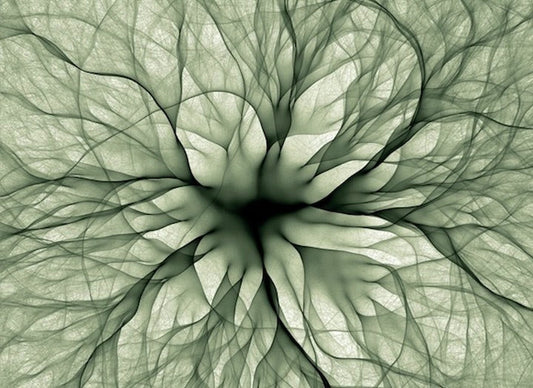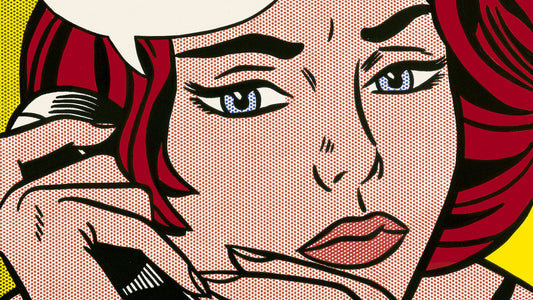The Manifestations of Religious Nationalism in Art
An artist’s intention for making art is just as important as understanding the distinctions between art about religion and art about religious nationalism. While scholars debate to this day on the exact definition of religion, there is more consensus on what it means for a group of people to exhibit features paralleling religious nationalism. Religious nationalism refers to the relationship between a group’s religion or dogma and nationalism within a region.
Nationalism in religion manifests in ways that make it difficult to distinguish between practices and politics. Recognizing these differences becomes even more challenging when such art becomes interwoven with history classes and becomes the collective warped understanding of history. So by recognizing common patterns in religious nationalism in art throughout these periods, the symbols become easier to pick up on when recycled in present artworks.
It is important to note that a lot of examples are not religious in nature but derive from tactics also seen in religious idolization that share characteristics with other religious symbols and mannerisms in order to elevate a political movement. Religious nationalism uses religious ideologies as a catalyst for social causes.

Leading Deity
Leaders in art containing this intersection of religion and nationalism can be the figures themselves for personifications of a nation presented as a deity. The figure propels a particular perspective on politics by placing them at the forefront of a political landscape, urging the masses to follow their supposed cause. A prominent example can be seen in the image of most American history textbooks. American Progress by John Gast tells the story of westward expansion through the eyes of colonizers. The 1872 painting focuses on Columbia, the female personification of the United States, in a white, flowy, angelic garb who holds a schoolbook and telegraph wire in her hand, floating above the ground to lead the way for expansion. The painting places her as the source of light, as though the indigenous peoples who lived there before were living in darkness. Her light drives them away as carts of settlers trail behind her.
While none lie about the figure being Columbia in the painting, many today mistake her likeness to an angel, and the scenery urges the viewer forward to follow her. She simply became a representation of nationalistic ideals manifested within an angelic-looking figure. This was intentional, as John Gast completed this painting as a commission for George Crofutt, a prominent publisher of Western travel guides amidst westward expansion. What was once used as an advertisement for colonizing the West has now become a staple in teaching United States history. In many cases, the image is used to simply associate an image with history, but it's not heavily discussed as an unrealistic interpretation of the late 1800s.

The God Hand
A more subtle way an artist will draw ties between a political figure and a religious figure lies in the positioning of their hands. A subject’s right finger held upward is used to symbolize both religious prowess and political authority. This is mainly seen in Mother and Child paintings within Christianity, where the artist positions Jesus’s right hand upward with two fingers pointing outward as a symbol of elevated existence and enlightenment. Artists took a similar approach to painting Maharajadhiraja Prithvi Narayan Shah, a Nepal king who sparked the discrimination and forced exodus of Muslim subjects in northern India. Upon unifying Nepal, he proclaimed his nation to be Asal Hindustan, or the “real land of Hindus.”
In Hinduism, the right hand symbolizes the flow of energy in the body, with each finger representing each of the five senses. In addition, a deity blesses with an open right hand. In his portrait, the right hand’s pose could be interpreted as the artist’s way of implying the use of religion in Shah’s actions as a ruler, being that his decrees and policies were ordained by a deity. While the use of the right hand is an immediate sign of religious parallels, the pose of the hand and fingers can refer to specific gods and deities in Hinduism and Buddhism. However, if a hand is extended with three fingers, that is usually indicative of an artist drawing parallels between a political figure and Jesus’s pose designed to represent the Father, Son, and Holy Spirit. In Shah’s case, his hand is in a position called “Tarjani Mudra” and symbolizes a guardian spirit. The hand position is associated with the goddess Durga who symbolizes protection and strength.
His legacy as a tyrant of Muslims in Nepal continues to manifest itself in present-day politics. In 2016, officials proposed to build a statue in his honor to facilitate tourism efforts. Today, the statue stands tall with the king’s hand in the same pose as the painting’s. Generations later, his hand still acts as a status of connection to religion.

Deified Interaction
In paintings, the artists provide more emphasis on a religious figure associated with light, good, and purity standing alongside a nation’s flag or political figures, implying that the figure endorses and favors one political party and ideology over another. The figures may be placing a hand on the shoulder of someone writing a law, or appear on their shoulder.
More commonly, these interactions are found in political cartoons, particularly to depict a political party in a less flattering light. Here you will find short, cartoony depictions of political figures having dealings with the devil. This especially happened in the United States during the Cold War when artists commonly depicted the devil facing the brutality of nuclear weapons. These comics on both sides focused on unflattering angles of each nation’s political framework, though many of these comics were satirical. In the United States, however, religion became the forefronting argument for anti-communism and was used to strengthen distinctions between the US and Russia—strengthening the notion that communism and atheism/antitheism were one of the same. It is from this same nationalistic framework that the United States included the phrase “one nation, under God,” in the Pledge of Allegiance.

Honorable Mention: Self-ascension
Finally, there is the style of nationalism in art involving placing a figure from social and political spheres above the plane of existence of that religion’s god or deity. These are more obviously used as propaganda tactics and are most commonly found in dictatorial societies such as those in North Korea and China. While these nations do not use a particular religion as a rallying cry for a political cause, they borrow from various religious practices and incorporate them into the political regime’s public relations. This includes artwork that depicts a social or political figure in an idolized manner, elevating them to a plane so far removed from everyday people that they must operate on another plane of existence as well.
This is different from artists using a leading deity in a work because it does not focus on a conceptualized presence of a religious figure—it places the political figure as an ascended figure. They are not the messengers to carry out a god’s mission, they ARE the idols. North Korean propaganda is one of the most common examples used because the paintings elevate their status as enlightened and well above the citizens of the nation. But even still, their paintings depict them with benevolence and compassion, laughing with children and holding lambs.

Other ways to distinguish
While these are some of the most prominent associations of religious nationalism in art, there are more ways to investigate the intentions of a piece and who it was made for:
Investigate the funding. Who commissioned the project? What kind of messages has the commissioner funded in the past? In an age where more questions than ever arise from separating the art from an artist, it’s important to research the source material as much as the results of their funding.
Investigate the artist. Look into their portfolio. What kind of messages do they elevate in their work? What are the intentions of the symbolism in their pieces?
While the symbolism can be studied from historical representations of religious nationalism in art, their prevalence in education serves as a testimony to interpretative approaches and it is important to notice the distinctions amidst political turmoil. According to the Pew Research Center’s Forum on Religion & Public Life, 84% of the world’s population is affiliated with or practices a religion, and these religions can easily be utilized for the political persuasion of nationalistic ideals if not recognized and understood within their context. The reality is that creative expression is a vessel for political persuasion as much as it is for religious expression, and when they merge and overlap without acknowledgment, religion, and politics become bundled under the same umbrella.
©ArtRKL™️ LLC 2021-2023. All rights reserved. This material may not be published, broadcast, rewritten or redistributed. ArtRKL™️ and its underscore design indicate trademarks of ArtRKL™️ LLC and its subsidiaries.





